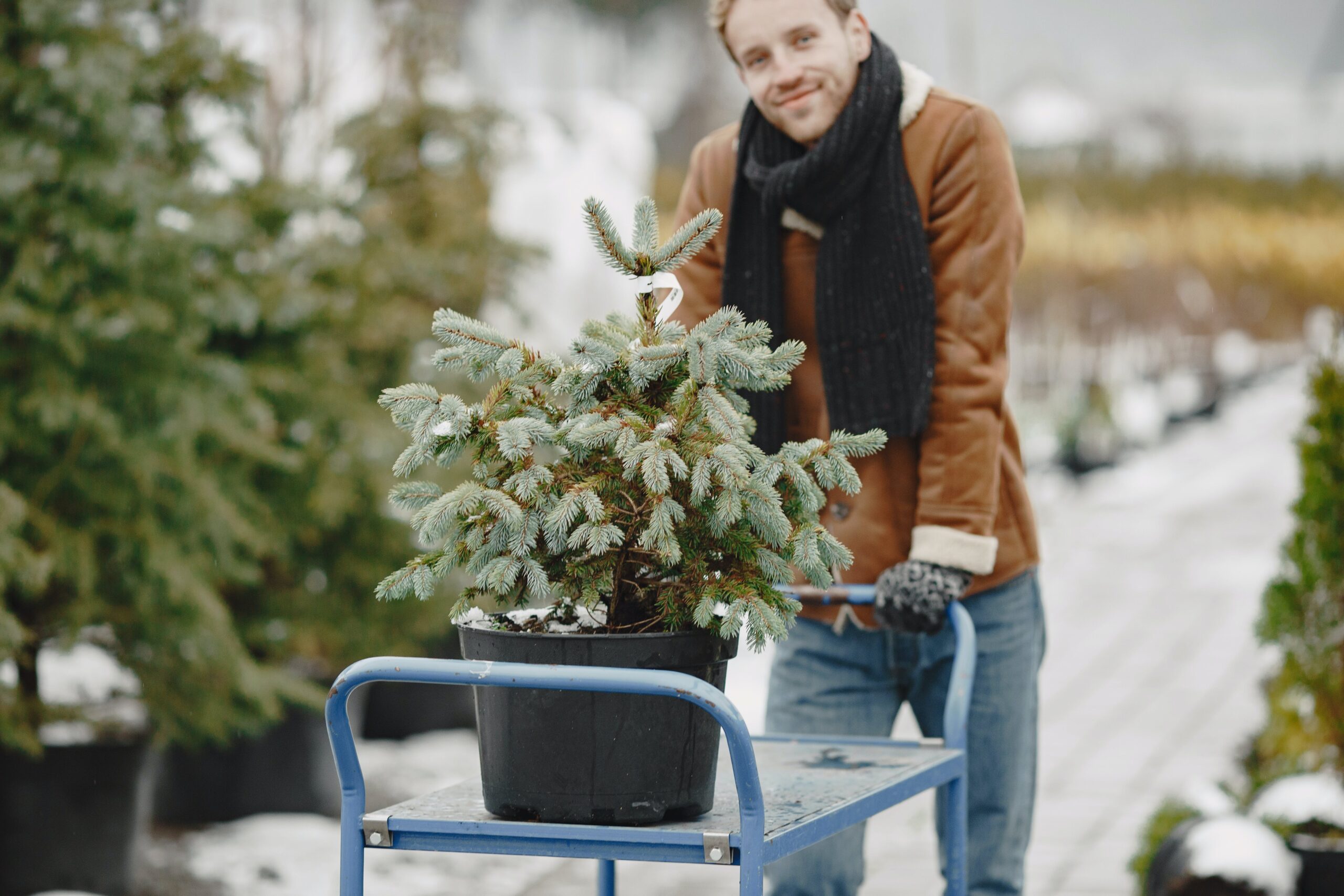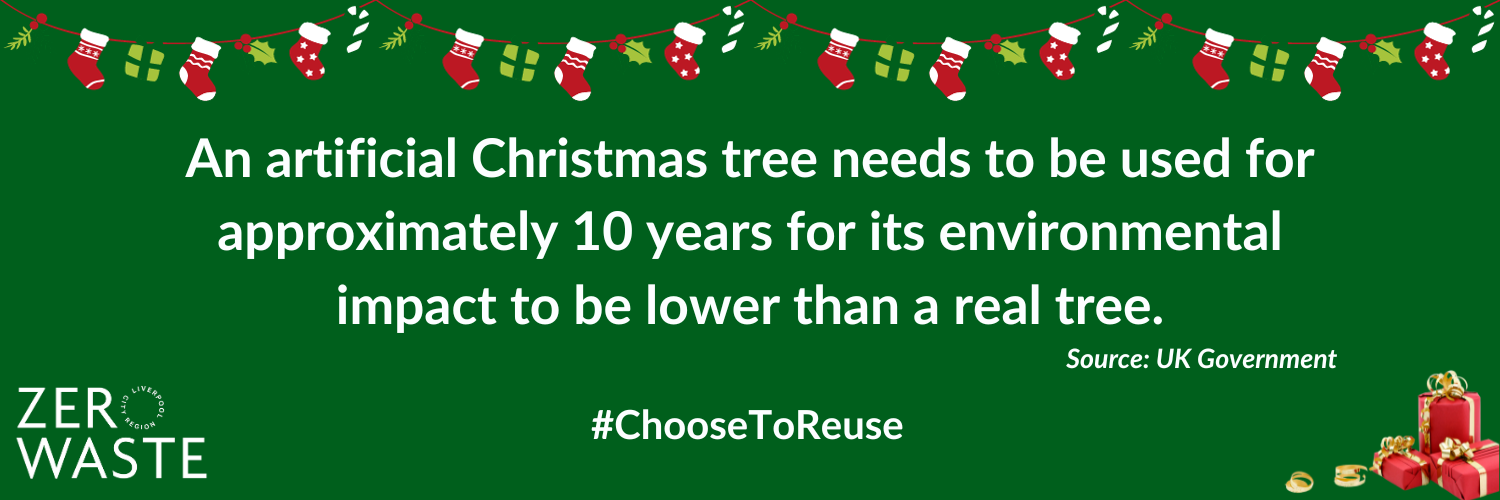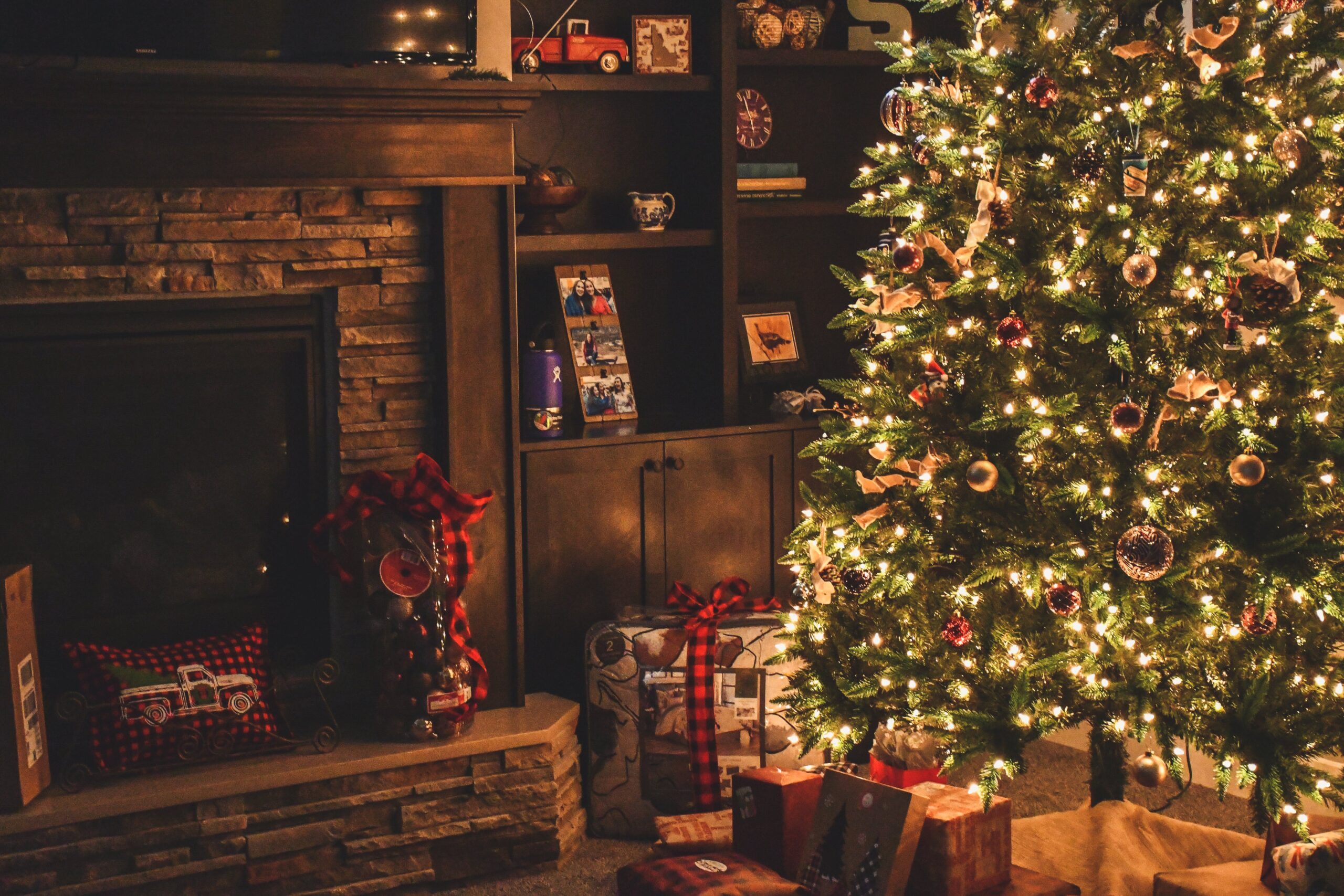The Christmas Tree is more than just a festive symbol! Nothing quite tops these beacons of merriment (with the literal exception of fairies, angels and stars, of course).
Our #ChooseToReuse Christmas Tree edition provides you with sustainable tips which can help you to branch our environmentally…
Natural Christmas Trees
For those of us who pick up natural (or “real”) Christmas trees, coming home with a fresh, live one is a family tradition which fills our homes with a natural seasonal scent and brings unbridled joy.
Beyond the advantages of being tree-mendously traditional and effusing festive fragrances, real Christmas trees are better for the environment.
What makes real Christmas trees better for the environment?
- They are grown to be harvested and are also compostable – whereas their artificial counterparts don’t go anywhere fast once they inevitably end up in the waste stream.
- They are beacons of biodiversity – in the years it takes to grow a real Christmas tree, they provide a habitat for wildlife to thrive in. Research has found that the growth cycle of Christmas trees attracts up to 40 different bird species!
Where should I buy my real Christmas tree?
Buying real Christmas trees that are UK-grown is a sure way of keeping your carbon footprint low.
Choosing to buy locally is viewed as the best option, as it reduces the miles travelled, while The Soil Association state that organic independent retailers or farm shops are more likely to opt for growers who totally avoid the use of harmful pesticides on their farms.
There are a number of local providers in and around Liverpool City Region that sell UK-grown trees. We have listed a few below:
- Based in Liverpool: Christmas Trees Liverpool
- Based in Sefton: Wright’s
- Based in St Helens: Rainfords Christmas Trees
- Based in Wirral: Church Farm Christmas Tree Forest
- Based in Cheshire: Ivy Cottage Tree Farm and Cheshire Christmas Trees
- Based in Lancashire: Giltrees Christmas Tree Suppliers
Potted Christmas trees

According to The Carbon Trust:
“Potted trees (with roots) are able to be re-used, spreading the carbon footprint over multiple years and potentially avoiding transport emissions, making them a more sustainable option if you’re after a real Christmas tree.”
With regards to caring for potted trees, The Royal Horticultural Society advises that potted trees should be brought indoors as late as possible – ideally, the weekend before (or a few days before) Christmas Day.
Potted trees should be displayed in a cool room to reduce stress and damage, and should be kept in the house no longer than 12 days. If your potted tree begins to look sad, putting it back outside sooner rather than later is the best option to increase its health and longevity.
You can then either plant the tree out in the garden after Christmas, or you can grow it on in a container and reuse next year – visit the official Royal Horticultural Society for further guidance on how to do this.
Rent a Christmas tree
Renting live Christmas trees is also an option worth considering, thanks to online retailers such as Good Elf who deliver across the UK.
Pros: Rent-a-tree schemes usually include delivery and collection, with the guarantee that your real Christmas tree won’t end up going to waste.
Cons: This option can be more costly and is likely to result in extra miles travelled. You also don’t get the benefit of seeing the tree up close and personal before paying your rental fee.
Responsible reuse and disposal of real Christmas trees
If your real Christmas tree is not potted with roots and has been cut, then it cannot be replanted.
However, the good news is that there are several ways you can prevent your real Christmas tree from going to waste – this is important, as real trees decompose and produce methane gas, which is 25 times more potent as a greenhouse gas than carbon dioxide.
Here are the options you can pursue when disposing of your real Christmas tree responsibly:
- Recycle at your local Household Waste Recycling Centre – find the nearest one to you via the Merseyside Recycling and Waste Authority website.
- Use your local Council’s green waste collection service – some districts do charge, and operate their green waste kerbside collections at different times of the year, so be sure to check directly in your area: Halton Borough Council, Knowsley Council, Liverpool City Council, Sefton Council, St Helens Borough Council, Wirral Council.
- Start a new compost pile – trim and stack your Christmas tree branches four to six inches high and start adding your kitchen scraps thereafter. The vegetable peelings from your Christmas dinner may be a good place to start!
- Shake off your pines – cutting off branches and shaking dead pine needles onto lawns, flowerbeds and plants is a great way to keep your garden well fertilised. This owes to the fact that pine needles don’t collect mould and decompose slowly, which are perfect characteristics that help to enrichen soil!
- Embrace biodiversity – take your Christmas tree outside into the garden and either leave in its stand or place on its side so that it can act as a shelter for bugs and birds during the winter months.
- Safely burn your tree – chopping up your tree and safely burning in your fire pit or chimenea emits the carbon dioxide that it stored up when it was growing, so there is no net increase!
Artificial Trees
Those of us who use artificial trees in our homes laud them for their ability to create a streamlined aesthetic, as well as for their convenient, low-maintenance nature… What’s more, if you look after them properly, they can be reused for years on end!

The above statistic from the UK government indicates that reusing artificial Christmas trees is a crucial component towards protecting the environment.
As stated by The Soil Association:
“Most artificial trees are made in China, with the dual environmental impact of being made from plastic, PVC and metal, and then shipped overseas.
However, it isn’t just the manufacturing that racks up their carbon footprint. Artificial Christmas trees aren’t recyclable, so when they’re inevitably thrown away, they end up in landfill, going nowhere fast.
According to the Carbon Trust, a two-metre artificial tree has a carbon footprint of around 40kg, more than ten times that of a real tree that’s burned after Christmas.”
But it’s not all bad news.
The Carbon Trust states that an artificial tree used over multiple years (7-20 times depending on the weight and different materials in the tree) is actually better for the environment than buying a new, commercially grown tree every year.
So, while the artificial tree route is not the primary recommendation, it can be a good solution if you treat it as a long-term investment.
If you keep your artificial tree in good condition but no longer can use it, donating to a local charity to reuse or sell is the best option.
This blog forms part of our #ChooseToReuse series, originally publicised in 2023. All external links, statistics and advice have been checked and, where necessary, updated. Please note, with the exception of MRWA-published documents, external links featured within this article are not officially endorsed by MRWA and are for reference and information purposes only. All external linked features and the information contained within them may be subject to change.



